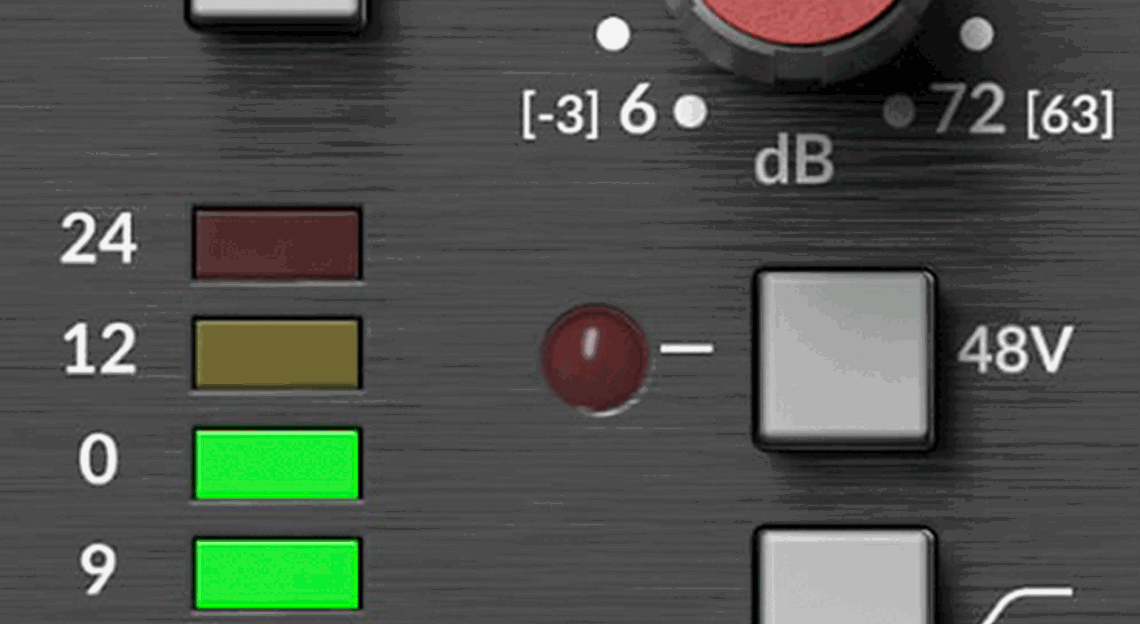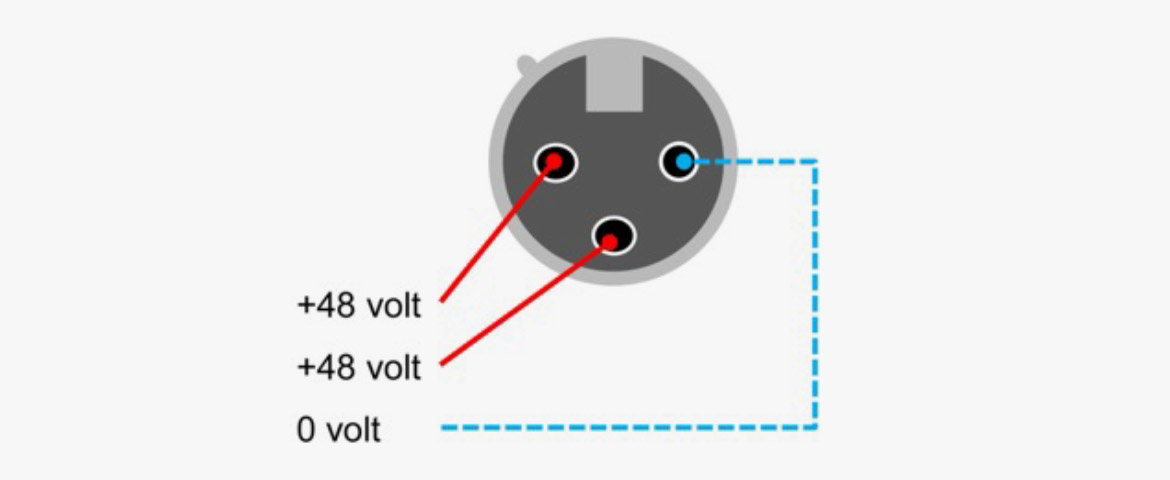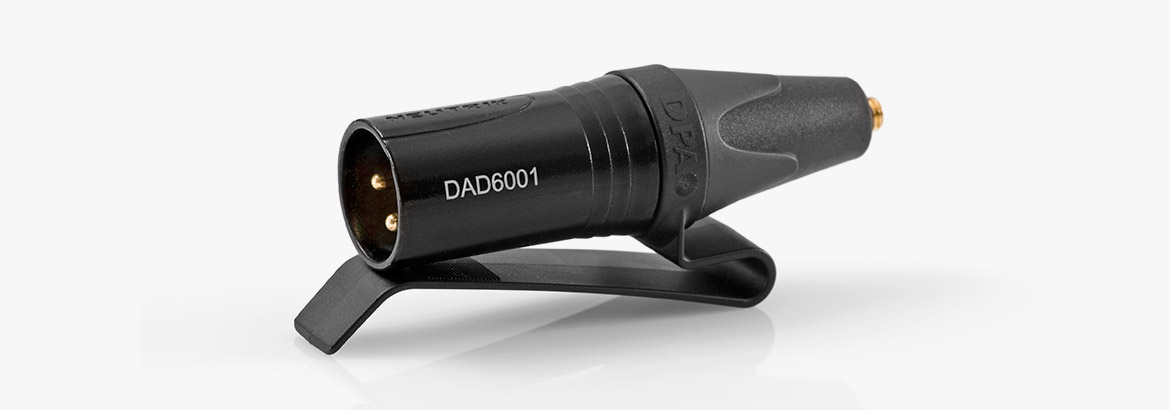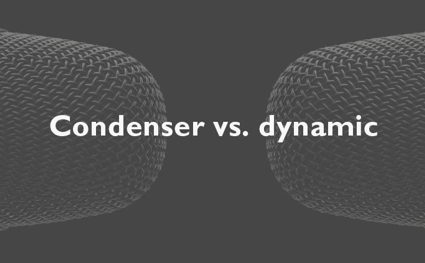Know the basics about phantom power
All condenser microphones need power. Phantom power is the primary standard for professional microphones. Here are answers to 10+ of the most frequent questions about phantom power and its use in microphones.

What is phantom power?
The short version: Phantom power is the standard method for powering professional condenser microphones via the XLR-3 connector and balanced cables. The XLR-connector's pin 2 and pin 3 both carry +48 volts ±4 volts DC. Pin 1 is 0 volt.
The name "phantom power" refers to the "invisibility" when connecting balanced microphones that do not need external power, like dynamic (moving coil) microphones. In short, the name is P48.

Figure 1.
Why do microphones need power?
Only microphones with built-in electronics need power. That is primarily condenser microphones. However, specific dynamic microphones (ribbon mics) with electronics also apply phantom power.
Is it standardized?
An international standard describes phantom power to secure that the connection works as intended across all brands. The standard IEC 61938:2018 outlines the technical specifications. These specs concern the voltage, the current draw, the impedance, etc.

Figure 2. IEC Standard 61938:2018
Is phantom power always 48 volts?
Given the IEC standard, all new phantom-equipped products (recorder inputs, mixer inputs, preamps, etc.) should provide 48 volts. However, it has previously been an option for designers to choose between 12 volts or 24 volts. So, there are systems out there providing less than 48 volts. Even 15 volts and 18 volts systems exist. Sometimes a device only indicates the application of phantom, but not the actual voltage.
What if the voltage is less than 48 volts?
Most professional phantom-powered microphones need 48 volts. (A few brands can work with 9-52 volts). When you have a P48-microphone, it may still work at a lower voltage. However, the typical result is that the microphone's performance is affected, reducing the max SPL handling and increasing distortion. If the voltage is too low, the microphone will stop working.
How much current can you draw?
The IEC standard specifies that the rated available current of P48 is 7 mA, and 10 mA is the maximum.
Must the P48 be switched off if I don't use it?
Basically, it is not necessary to switch off phantom power (this is why it is called Phantom). However, it is also a question of the input-device facilities. Some devices have switches individually per channel. Others are equipped with one single button connecting/disconnecting all channels simultaneously.
What if my device does not have phantom?
There are various options if you have a recorder, mixer or amplifier without phantom power and a microphone that needs it. If you are on the go, you may need a supply unit that works via batteries. In the studio or on stage, you can use a mains-connected phantom-power unit.
Do miniature microphones also need phantom power?
Error loading Partial View script (file: ~/Views/MacroPartials/TaggedProducts.cshtml)Yes and no. Most miniature microphones are designed to work in connection with wireless transmitters, which are limited to providing less than 10 volts. Further, the transmitters are not equipped with XLR-connectors, so it is not possible to provide P48. However, there are adaptors available, that convert P48 to the voltage relevant for making the miniature microphone work. DPA miniature microphones connected via an adapter (DAD6001) work in the range of 12-48 volts.

Figure 3. Adapter for DPA miniature microphones.
How is it possible to carry both AC and DC?
One of the intelligent things about P48 is that the wiring scheme brings DC to the microphone – and the same wiring brings the signal back to the input. Think of it like the sea: We have a water level (the DC), and in addition, we have waves (the AC, the signal). So, you can say that the DC is moving up or down, modulated by the AC.

Figure 4. Basic Phantom power circuitry.
Can P48 power anything else but microphones?
P48 can power other devices than microphones, i.e., line drivers. It is sometimes used for powering work lights.
When was phantom power invented?
Phantom power was invented in 1966 by Neumann in connection with a special delivery to NRK (Norwegian Broadcasting), where 48 volts were available for a lighting system. The first standard was DIN 45 596 (now superseded by the IEC 61938:2018).
Can phantom power damage a microphone?

If an unbalanced and sensitive microphone – like a ribbon microphone – is connected, it may get damaged. So never connect unbalanced microphones or cables to phantom-powered inputs.
How to check the phantom power?
A straightforward way to check the phantom power is using a voltage meter. One test probe to pin 1 and the other to pin 2 or to pin 3. It should read 48 volts DC (and 0 volts AC) in both cases. Between pin 2 and 3, it should read 0 volts. The 48-volt reading is the open-circuit voltage before connecting the microphone. When connecting a microphone, the voltage drops to a lower value due to the current draw through the feeding resistors.
A signal generator like the NTI-Audio MR Pro Minirator reads whether the output "looks" into a P48 input (i.e., a microphone input). Also, various "gadgets" or tools are available, like the Canford P48-Check Phantom Power Tester.

Figure 5. Canford P48-Check Phantom Power Tester.
Does P48 circuitry have any effect on the input impedance?
Any input has an input impedance. As a rule of thumb, the load (input impedance) should be 5-10 times higher than the source impedance. For example, having a microphone with a 100 Ω output impedance, the load should be at least 500-1000 Ω. That is not a problem with phantom-powered input, where the input impedance is 3.4 kΩ. However, a dynamic microphone with a nonlinear output impedance (i.e., a coil) usually prefers a much higher input impedance. Thus, it is a good idea with a particular high ohmic impedance for dynamic mics.
How much current draw can you expect from a microphone?
The microphone design determines the current draw. Here are some typical values:
Error loading Partial View script (file: ~/Views/MacroPartials/TaggedProducts.cshtml)
| Microphone | Voltage specified (volts) | Current draw (mA) |
| DPA 2006A | 48 | 2.8 |
| DPA 2006C | 48 | 2.8 |
| DPA 4006A | 48 | 2.8 |
| DPA 4006C | 48 | 2.8 |
| DPA 4006ES | 48 | 3.5 |
| DPA 4017B | 48 | 4.5 |
| DPA 4017C | 48 | 2.8 |
| DPA 4017ER/ES | 48 | 3.5 |
| DPA 4041-SP | 48 | 2.2 |
| DPA 4060 + DAD 6001 | 12-48 | 3.5 |
| Various brands - specs from datasheet |
||
| AKG C414 XLS | 48 | 4.5 |
| AKG C451B | 9-52 | 2 |
| AKG P170 | 48 | 3 |
| Audio-Technica AT2020 | 48 | 2 |
| Audio-Technica ATM350U | 11-52 | 3.5 |
| Audio-Technica AE3300 | 11-52 | 3 |
| Crown (AKG) PCC-160 | 12-48 | n/a |
| Crown (AKG) PZM30D | 12-48 | n/a |
| Earthworks SR40V | 24-48 | 10.0 |
| Earthworks SR314 | 24-48 | 10.0 |
| Earthworks M23 | 24-48 | 10.0 |
| Neumann U87 | 48 | 0.8 |
| Neumann KM100 | 48 | 2.0 |
| Neumann KSM105 | 48 | 3.5 |
| Schoeps CCM2 | 12 48 |
3.6 4.0 |
| Schoeps CMIT 5 | 48 | 4.4 |
| Schoeps V4 | 48 | 3.3 |
| Sennheiser MKH40 | 48 | 2.0 |
| Sennheiser MKH416 | 48 | 2.0 |
| Sennheiser MKH 8040 | 48 | 3.3 |
| Shure KSM9 | 48 | 5.2 |
| Shure KSM44A | 11-52 | 5.8 |
| Shure SM-81 | 11-52 | 1.2 |
References
[1] Benjamin et al – Performance of the Microphone-Preamp Interface. AES Convention e-Brief 176. October 2014.
Bortoni, Rosalfonso; Kirkwood, Wayne: The 48 Volt Phantom Menace Returns. AES Convention Paper 7909. October 2009.
[2] Brixen & Voetmann: Electroacústica Práctica. ISBN 978-84-7360-625-7, 2018.
Chalupa, Rudolf: A Novel Topology for a DC-Coupled Phantom-Powered Preamplifier. AES Convention Paper 2820. October 1989.
[3] DIN 45596 German Language – Microphones; Phantom Powering
[4] Gaskell, Robert-Eric: Capacitor "Sound" in Microphone Preamplifier DC Blocking and HPF Applications: Comparing Measurements to Listening Test. AES Convention Paper 8350. May 2011.
[5] Green, Steve: Microphone Preamplifier Design. Proceedings of the UK 24th AES Conference. June 2011.
[6] Groner, Samuel: Reducing Transformerless Microphone Preamplifier Noise at Low Gain Settings. JAES Vol 63 Issue 2 pp 184-190. March 2015.
[7] IEC 61938:2018 Multimedia systems – Guide to the recommended characteristics of analogue interfaces to achieve interoperability.
[8] Josephson, David L: Nonlinearities in Condenser Microphone Electronics; Design Considerations for New Solid-State Microphones. AES Convention Paper 2983. September 1990.
[9] Kist, Joost; Foley, Dan: Improving Audio Performance of Microphones Using a Novel Approach to Generating 48 Volt Phantom Powering. AES Convention Paper 10095. October 2018.
[10] Peus, Stephan; Kern, Otmar: A Method of Remote-Controlling the Polar Pattern of a Condenser Microphone with Standard Phantom Powering. AES Convention Pater 3592. March 1993.
[11] Thomas, Frank; Hebert Gary: The 48-Volt Phantom Menace. AES Convention Paper 5335. May 2001.
[12] Wuttke, Jörg: The Analog Microphone Interface and Its History. AES Convention Paper 7733. May 2009.
[13] Wuttke, Jörg: The feeble phantom. Microphone Data Ltd 2010.
[14] Wuttke, Jörg: The pathetic phantom. Resolution, pp 56-58. Jan/Feb 2003.
[15] Zaim, Mark: Phantom Powering the Modern Condenser Microphone Part II: The Effect of Load on Microphone Performance. AES Convention e-Brief. October 2011.
[16] Zaim, Mark; Kikutani, Tadashi; Green, Jackie: Phantom Powering the Modern Condenser Microphone: A Practical Look at Conditions for Optimized Performance. AES Convention Paper 7594. October 2008.






